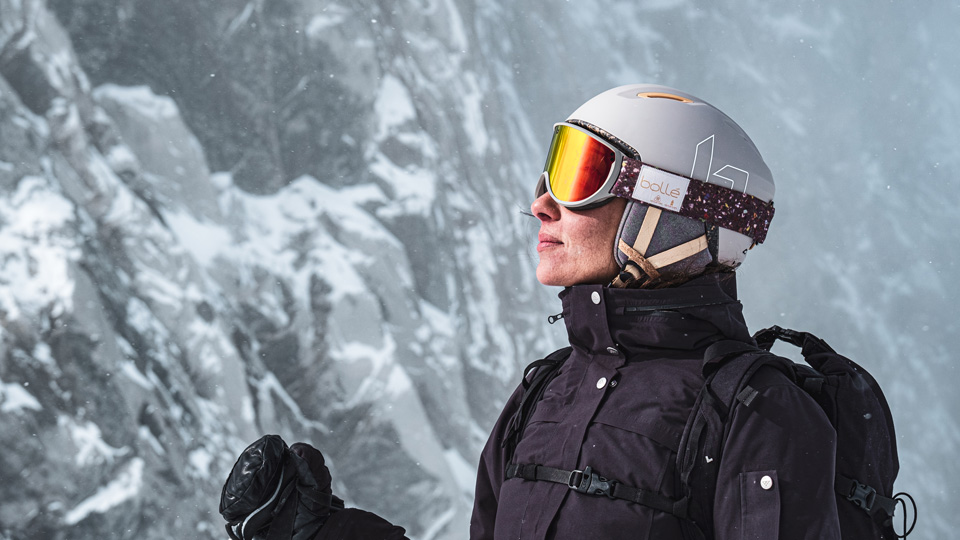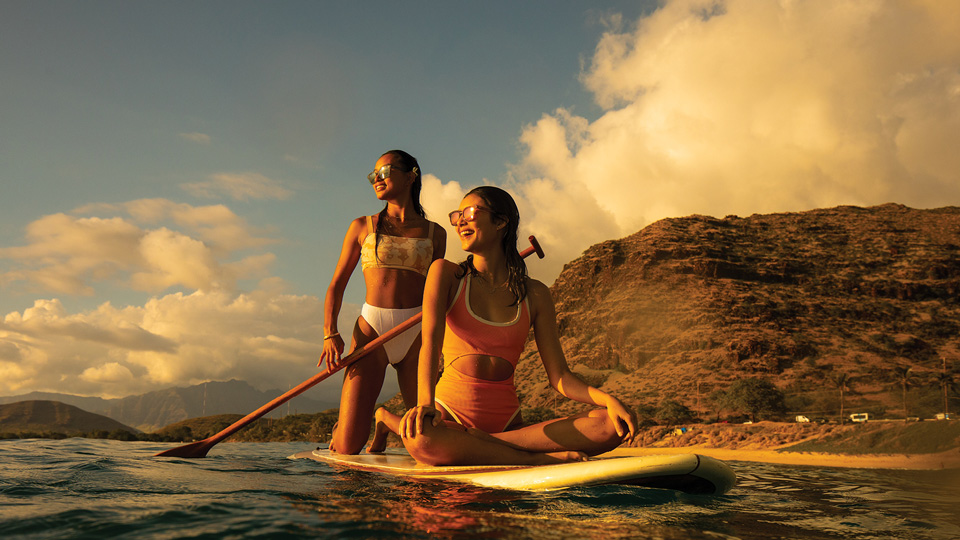- OT
- Industry
- Eyewear and lenses
- Game on: opportunities in sports eyewear
Supplier insight
Game on: opportunities in sports eyewear
The sports eyewear market is a growth area and presents “tremendous” opportunities for practices, suppliers suggest

09 March 2023
Sports eyewear represents an opportunity for practitioners, suppliers suggest, both to enhance the sporting experience of their patients, and create an additional opportunity for revenue in practice.
Thomas Beier, director of vision sensation for Silhouette, which is behind the sports eyewear brand, Evil Eye, explained to OT: “According to our experience and our international markets, the segment of complete sports eyewear is developing really well.”
He suggested that, where traditional eyewear is returning to levels seen before the pandemic, sports eyewear is “steadily increasing double digits.”
Craig McNeil, UK sales manager for the sporting eyewear company, Bollé, described the changes seen in the market in recent years – with a rise in eyewear for cycling and running during the height of the pandemic, but a decrease in prescription eyewear as lockdowns restricted appointments in practice.
The company then saw an uplift in 2021 and a levelling in 2022, he said, with a strong market for skiing and ski goggles as the sporting seasons returned.
“Sports eyewear is a growth area without a shadow of a doubt,” McNeil said. “Since I started 13 years ago, I would say we have seen continual growth year-on-year when it comes to prescription eyewear.
Martijn van Eerde, senior director, marketing EMEA and APAC for eyewear manufacturer, Maui Jim, also described a “tremendous opportunity, maybe almost an obligation” to raise awareness of eye protection for people playing sports.
He noted that while sportspeople will spend a significant amount of money on sports equipment, that doesn’t always translate to their approach to sunglasses. “When we think about frame design, the lenses and the protection against impact and sun, I think it’s fair to say that in a lot of cases, it should be a premium product,” he said, “It’s an opportunity.”
Meeting needs
McNeil highlighted the important role that sports eyewear can play as part of a patient’s sporting set-up, particularly for those requiring prescription lenses.
“You’ve got a performance-driven customer who is very into, say cycling, and so spends tens of thousands of pounds on a bike, but can’t read their Garmin and so wants to have a prescription pair,” he said.
A key change McNeil has observed in this category has been an increasing percentage of customers from an older generation, who have a higher disposable income and are continuing to play sport later in life, even travelling abroad for sporting events.
As an example, he shared: “One of my clients had a couple come in who were going to the Antarctic and wanted to have category four lenses in sunglasses, to prescription. We provided two pairs with side shields for full protection. They were only going for two weeks, but they wanted the best.”
“The optician that realises this, and has the option to be able to dispense those products, will get a multitude of different customers coming in,” McNeil added.
Beier noted that tints are a key part of the equation when choosing the perfect frames.
“It has to include a good filter to protect the eyes and, at the same time, reduce the bleed effect,” he said, while anti-reflective coatings avoid the wearer seeing their own eye on the inside of the lens.
With safety a “must,” he added that the lens material itself must be “absolutely unbreakable.”

Prescription lenses in sports
Suppliers highlighted that customers aren’t always aware that prescription lenses are an option for their sports eyewear.
McNeil said: “I think customers need guidance from the profession when it comes to sports eyewear. I find it amazing the number of customers we meet who weren’t aware they could get sports eyewear with prescriptions.”
While contact lenses will provide an option for many, this won’t be the ideal solution for all. This is where prescription lenses can be beneficial, and he noted that this could be a “cornerstone” for practices when it comes to sports eyewear.
Each of the suppliers benefit from laboratory facilities supporting the customisation of frames and lenses to the requirements shared by the practice team.
For Bollé, almost all of the range can be provided with prescription, McNeil said, with a lab for customising lenses, handling orders submitted from practices.
For cyclists, the company uses laser-cuts shield lenses, meaning the lens can be incorporated into the shield, rather than inserting clip-ons.
Beier confirmed that plano lenses seen on the shelf will be “the very same” once a prescription is incorporated. Every model from the company can be glazed to match a prescription, using the Silhouette Vision Sensation Lab in Austria.
“Evil Eye guarantees using the very same quality, colour and lens material for plano, as for prescription,” he said.
Maui Jim also has its own labs, meaning the company can calculate the ideal lens design for each prescription in every frame they make.
Van Eerde noted that an important part of the company’s approach is training eye health professionals on the available options and how the system operates.
This is particularly true for progressive lenses, he said, with so many options for the lens design, choosing the right ones would depend on the sports the patient plays.
What do you enjoy the most about sport eyewear and lenses?
McNeil: Being able to enhance sports with these products is exciting, and enabling people to enjoy the freedom of the outdoors and the best vision in the sport that they do.
Beier: The variety and possibilities available to support any type of sports – in plano as well as prescription.
Van Eerde: You could see an improvement in your game with premium sunglasses, and increase your enjoyment. You don’t realise how annoying light can be until you’ve worn something that lets through only what you need.
Bringing sports in-house
Reflecting on how best to highlight sports eyewear solutions to patients, Beier suggested: “The most important advice we can give is to offer sports solutions to everybody who enters the practice.”
“It’s a win-win situation, because the wearer will discover greater comfort and better performance with sport glasses and lenses,” he said, adding that with the variety of designs, shapes, fits and lenses available, “practitioners can guide their patient towards a frame that enhances their experience of the sport.”
McNeil highlighted the role that practitioners play in understanding the patient’s lifestyle and making recommendations based on their requirements and prescription.
“I think the biggest driver is the optometrist in the consulting room,” he said. “Good optometrists, when testing, will discover what sports the patient is playing, and talk to them about what the dispensers can offer them in the practice when it comes to sports eyewear.”
Outside of the consulting room, he suggested that practices could utilise their online presence or online shops to remind patients of the options available to them in sports eyewear at key times of the year.
He acknowledged that stocking plano sports frames in order to show customers could feel like a hurdle for practices, but suggested: “We take an approach at Bollé, where practices don’t have to stock a lot of product.”
Practices can stock a core sports range to show customers and which could all be RX-able, and which “would be driven by training.”

Enquiring minds
Van Eerde emphasised the revenue opportunity that sports eyewear can present for practices, highlighting the importance of asking the “right” questions.
“In our training, we talk about ‘selling the second pair first,’” he explained. “A lot of patients that come in for ophthalmic eyewear will be buying those anyway ¬– they know they need correction. Before having them select that, I think it’s important to ask the right questions in order to sell (Rx) sunwear and upsell with other options.”
This could mean asking, beyond work or driving: “What are the moments when your vision needs to be optimal?”
Beyond the aesthetics of eyewear, there are also important questions that consumers should ask of the sports eyewear they try. He said: “I don’t think many people try on different lenses and consider: ‘Could I see the ball better, or estimate distances better, while wearing these?’”
These questions should be priorities when selecting eyewear for sports, van Eerde argued, and recommended educating consumers about the benefits of owning multiple pairs of frames, and the variety of choices in lenses.
“We’re not selling them something they don’t need – on the contrary¬ – it will enhance their lives, as well as being a boost to the revenue of the practice,” he said.
An enhanced experience
At the heart of the category is a passion for enhancing patients’ vision to support their sporting endeavours.
The protection that sports eyewear provides cannot be understated. Beier emphasised: Sports eyewear is a must if you want to optimise success and safety during sports.”
For McNeil, reflecting on the patients who might have “all the expensive gear” but struggle with fogged lenses, or when reading their fitness apps on-the-go, sports eyewear provides a solution: “We have a product for everybody that enables them to pursue their activities and feel stylish.”
Van Eerde agreed: “There is an opportunity to enhance people’s lives, and when it comes to sports, to help them to enhance performance, enjoy the sport more and be better protected when practicing it.”
For what it’s worth
When asked, suppliers noted that they had not yet seen an impact from cost of living concerns in the UK reflected in purchasing behaviours.
McNeil acknowledged that it is difficult to gauge what 2023 will look like, as prescription eyewear for sports is a high-end purchase.
Consumers also tend to buy sports eyewear when travelling for sports – such as ski holidays, sailing or cycling events, and so trends in travel plans could also have an effect.
Van Eerde suggested that the segment tends to be more resistant to economic downturns, maintaining a place at the higher end of average price ranges.
He acknowledged that owning multiple pairs of prescription eyewear can be a large investment.
“The important thing is to ensure a consumer knows what they get for this, because with mortgages and costs creeping up, arguably the cost of premium eyewear could potentially be a higher chunk of their disposable income than it was in the past,” he said.
However, this is money well-spent, he added: “In a lot of cases, the wearer will use them every day or at least on a regular basis. The eyewear will not only help them to protect themselves, and function better, but a good pair of prescription sunglasses helps them to enjoy vision more: the colours, contrasts, detail, and there is a lot to say for that.”
Giving an example of a smartphone, valued at thousands of pounds but deemed worth the cost by the majority of consumers, van Eerde said: “I would argue that investing in a good pair of prescription eyewear provides at least the same benefits as paying the high premium for a fancy phone, if not more. If you can make the consumer see that, everybody wins.”
Advertisement


Comments (0)
You must be logged in to join the discussion. Log in